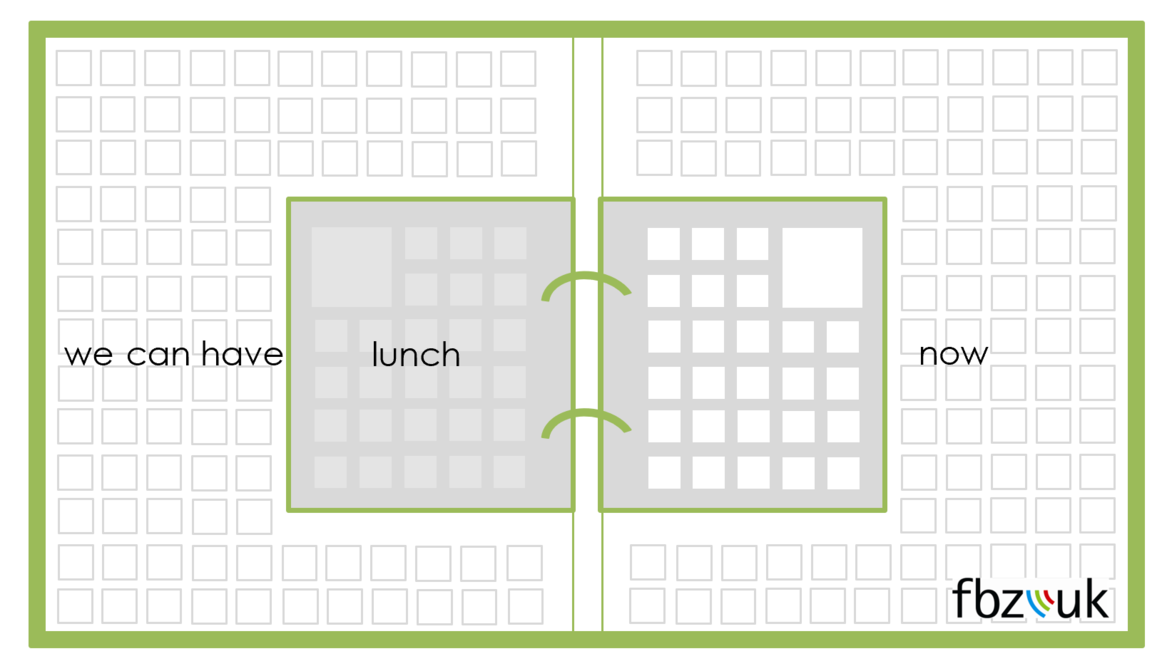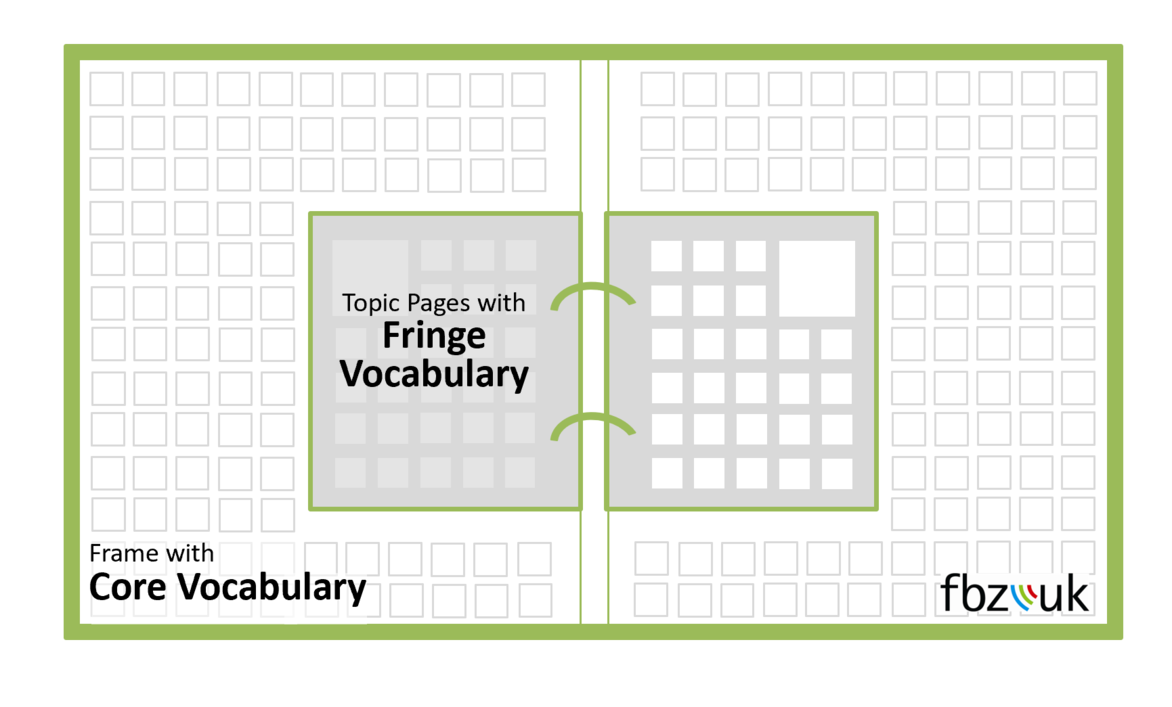The Cologne Communication boards and binder are the result of the application of research results on the language use. The first and foremost goal of the Cologne Communication Boards and Binder is to support the language development of the AAC user. To help the AAC user become a better communicator is important for social and educational reasons.
The basic idea of the communication boards and binder from Cologne is to provide a set of communication aids that make the combination of core and fringe vocabulary as easy as possible. The materials differ in complexity but all have the same structure and similar positions of the words.


Additionally, the combination of core and fringe vocabulary is easy.
We can have lunch now.
Can I get some milk?
I want the truck.
I have my book here.
Could you help me with my jacket?
While the core vocabulary is organised by word classes, the fringe vocabulary is sorted by topics. This way discussing i.e. lunch is possible without turning any pages:
My lunch smelled strange today and it looked disgusting. I did not even want to taste it.
The similar structure and positions make transfers for the AAC user so much easier. There is no need to learn new positions when a student moves on to a more complex vocabulary.
As mentioned, the materials differ in complexity but all have the same structure and similar positions of the words. In this way a very similar motor plan is used on a communication board with just 40 words or on the Cologne Communication Binder with approx. 450 words. Similar positions of the core words are even provided in the electronic versions MyCore/Score.
To model is one of the most successful strategies in AAC intervention. But often it is rather difficult to employ; especially for parents. To work with focus words might be a helpful strategy.
To help the students learn to understand and to use the words we suggest to work with so called focus words (Sachse/Willke 2011) or target words. As Gail van Tatenhove suggests, it is important to define a set of probably 150 target words that a student should learn over a longer period of time. Now to start, select and mark a couple of core words (max. 5-6). Choose words from different wordclasses i.e. with different colors and use these words with a high frequency over a certain period of time. Our suggestion is to use these words for six weeks before even evaluating whether or not the student is able to understand, use and/or combine these words. To just provide these words with a high frequency during several activities throughout the day is a huge help for some of the students. We have seen students that need this amount of input before they start imitating and using the words themselves. After the six weeks period, the team can decide whether to keep working with the same words or to move on and to choose and mark 4-6 other words. If the first focus words were marked with a red dot, mark the new set with a green dot and do not remove the reddots. This way all the communication partners see which words are present focus words and were focus words before so they know they are supposed to use these words as much as possible.
Boenisch, J. (2014). Die Bedeutung von Kernvokabular für unterstützt kommunizierende Kinder und Jugendliche. LOGOS, 3, 164-178.
Boenisch, J. & Sachse, S.K. (2016). Alltagskommunikation ermöglichen und Sprachentwicklung fördern am Beispiel der elektronischen Kommunikationshilfe MyCore. In ISAAC (Hrsg.), Handbuch der Unterstützten Kommunikation. Karlsruhe: von Loeper.
Boenisch, J. & Soto, G. (2015). The oral core vocabulary of typically developing English-speaking school-aged children: Implications for AAC Practice. Augmentative and Alternative Communication, 31 (1), 77-84.
Sachse, S. (2007). Zur Bedeutung von Kern- und Randvokabular in der Alltagskommunikation. Unterstützte Kommunikation, 3.
Sachse, S.K. & Willke, M. (2020). Fokuswörter in der Interventionsplanung und -umsetzung. In J. Boenisch & S.K. Sachse (Hrsg.), Kompendium Unterstützte Kommunikation, 224 - 232. Stuttgart: Kohlhammer.